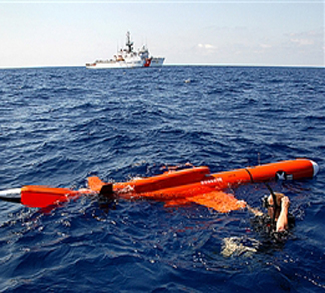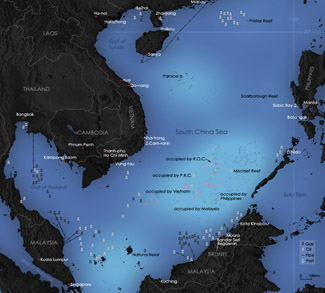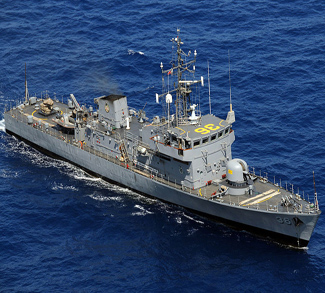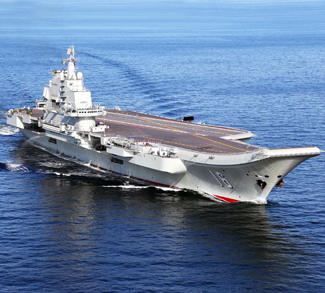The concept of (modern) hybrid warfare is not at all new with both state and non-state actors (NSAs) having practiced the concept for years. States have even introduced various self-styled “soldiers,” the abstruse actions and objectives of which almost entirely skirt international law. Although hybrid warfare is an old concept, it is one that requires increased observation due to radically new techniques coming into play. The combination of old ideas and novel applications, in emerging theaters can fundamentally alter regional security dynamics, greatly shifting the strategic calculations of state and non-state hybrid warriors.
Putin’s successes have been sketched in the form of interventions in Moldova, Georgia, and most recently, Ukraine – where Putin’s perverse use of “Little Green Men” and Spetsnaz (Russia’s Special Forces) draped in civilian garment led to the annexation of Crimea, and dislodged large parts of eastern Ukraine from Kiev’s rightful possession. While Iran has also proven itself a leader in hybrid warfare capabilities in and around the Middle East, the use of hybrid warfare has been put to great effect on non-state and sub-state levels, with actors like the Islamic State (IS), Hezbollah (most notably during the Israel-Hezbollah war of 2006), and Boko Haram, among numerous others, having expanded and continuing to spread the practice of warfare in this fashion.
Devoid of legal or national marking, the US’ deniable hybrid instruments can remain concealed, almost in plain sight.
Few regions encapsulate the idea of modern hybrid warfare expansion as crisply as the South China Sea (SCS). China has made bold and strident moves over the past many months to reassert its claims of sovereignty and presence over a region of geopolitical importance, in what could aptly be referred to as state-sponsored piracy activities. China has simultaneously intertwined its actions with government supported propaganda campaigns, and a variation of violent and lethal action, scare tactics, and a blurring of soldier-civilian lines.
Whereas previous instances of modern hybrid warfare have predominantly occurred on land, the South China Sea will play host to the concept in a unique context. What is being observed in this area is in a way part of a normal progression in the application of technology as well as tactics and strategies that have led to major shifts in power in previous cases. A littoral guerilla style of warfare unfolds in much the same fashion as land-based operations, but they bring several distinct advantages for those actively pursuing littoral hybrid warfare activities, providing widespread coverage for a littoral hybrid warrior.
After a brief period of China leveraging restricted warfare for small but incremental politically and militarily strategic aims in its own backyard, most notably by way of its maritime military – China’s so-called “Third Sea Force” – the US took-up a protuberant position and began play a major role in the emergence of hybrid warfare in the South China Sea dispute. China’s capture of the US Navy’s (USN) Unmanned Underwater Vehicle (UUV) buoyancy glider has anything but signaled the start of the US’ littoral hybrid endeavors. US military officials instead have been planning for this type of engagement for years.
A process that has recently been expected to take a decade or more, the emergence of littoral hybrid warfare has already arrived. Operating relatively undetected in the South China Sea, the US can undertake interdiction operations with relative ease, and signal an ambiguous presence in the disputed area. Because the South China Sea is not part of the US’ “home territory,” it need not establish complete control over the region to frustrate the claims made by other states or their military/security assets.
The next stage of warfare expanding in this direction is already taking place. The US has the requisite mechanisms for countering what has been perceived by senior officials in the US as Chinese threats, but might not have developed its long-term vision for waging littoral hybrid warfare in Asia – a strategic effect that can be realized incrementally and relatively easily but also decisively, both tactically and operationally. Expect this to play-out in tandem, sort of like choreography, with China’s policy formation and implementation in the same region. China and the US have made it clear that they are aware of the possibility that other smaller states in the region will have a considerable impact on modern hybrid warfare expansion in the South China Sea dispute, just as small state and NSAs have in other parts of the world.
Because the US has the capacity to aggressively invest in the development of newer systems and produce large quantities of its “Little Grey (Un)Men,” they can deeply influence the pace of hybrid warfare in the South China Sea. Systems deployed in the SCS and elsewhere in Asia can “rest” for months at a time, and undertake missions at sea or over land. The same can be applied in other critical locations like the Arabian Gulf, Yellow Sea, East China Sea, and even in the Arctic Ocean – anywhere where there is the presence of perceived enemy forces, including littoral forces, military bases, areas and objects of economic interest such as offshore oil platforms, or areas of political interest
Devoid of legal or national marking, the US’ deniable hybrid instruments can remain concealed, almost in plain sight. When required to act, they can then undertake missions in stealthy fashion, providing the US with valuable data on the presence of, in the case of the South China Sea for example, China’s “grey hulls” and “white hulls,” though with greater difficulty on China’s maritime militia that might be operating in disputed areas. The US has already had intimate encounters with hybrid threats, particularly within the framework of the “War on Terror” (WoT), and used its Predator fleets – armed unmanned aerial vehicles (UAVs) – to significant effect in a wide array of conflict zones. Their use has depicted the potential for spending on much simpler though specialized equipment suited for highly specific tasks.
That same practice can be applied to the US’ sea forces as well with the US producing hundreds, if not thousands, of unmanned systems to patrol vital waterways and maintain their presence in hotly-coveted geographical locales. The US’ capacity for large-scale building coupled with small and relatively inexpensive hybrid warfare instruments breeds a departure from costly platforms when low-cost UUVs can function even more effectively in military/non-military missions. They fall neatly in-line with the view of a state, any state, interested in disrupting the security or security interests of another, practically anywhere.
The international realm today provides ideal conditions for all types of actors to bid for power, and for states to turn to atypical methods of warfare in an attempt to leverage their internal weaknesses and external disadvantages. Even powerful states like the US can benefit from a combination of regular and irregular elements in its military force structure. Paying closer attention to the potential benefits of modern hybrid warfare is particularly useful for the US government and its military, both of which have been criticized regularly for their lack of flexibility and their inability to adapt to a contemporary security environment in frequent flux.
It would be remiss to claim that US has learned all it can over the course of many years and decades as a war practitioner. Rather, many of its experiences have proved to be less than pristine examples of military execution and orchestration, or more harshly the height of political and military folly. Since the start of its 9/11 wars, the US has increasingly changed its military thinking and drastically altered its strategic doctrine, particularly as a result of its campaigns in Iraq and Afghanistan. The South China Sea dispute presents the US with another opportunity for further developing its military competence and dexterity, especially as a modern hybrid war practitioner, and others in the region will surely follow.




